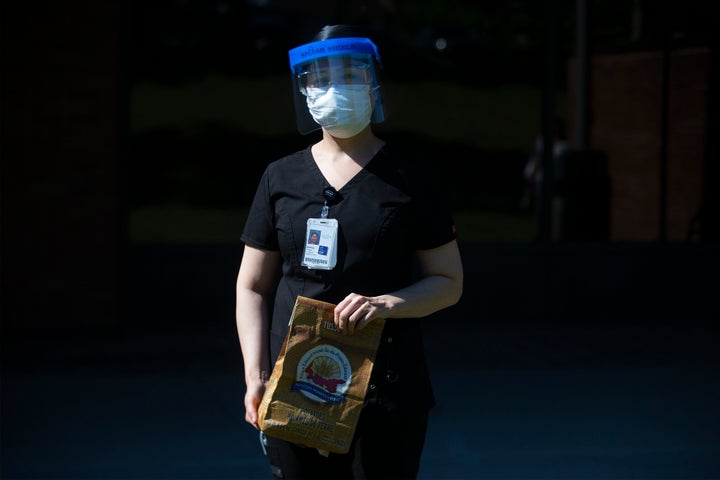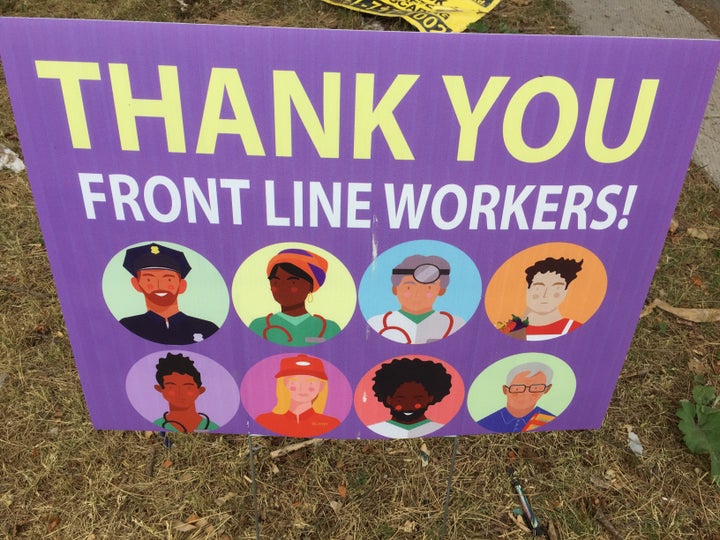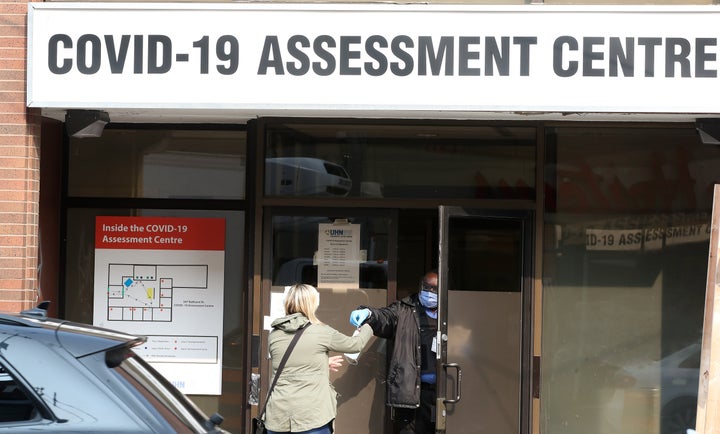
The president of the Ontario Nurses’ Association (ONA) says it’s “unacceptable” for Ontario hospitals to lay off dozens of registered nurses as the province approaches flu season, a second wave of the COVID-19 pandemic and a backlog of surgeries.
Southlake Regional Health Centre in Newmarket announced this week that it will reduce 95 positions.
Located in Ontario Health Minister Christine Elliott’s riding, the hospital has already been operating over capacity. Southlake was over capacity for all but seven days of the first half of 2019, a CBC News investigation found.
“They are already at a really serious or critical point in their staffing. And then now to announce layoffs of this number of registered nurses is shocking and it’s unacceptable,” ONA President Vicki McKenna told HuffPost Canada.

McKenna said she’s heard from nurses at Southlake that they’re already spread thin. Some, she said, are thinking of leaving because of the workload and stress, even if they’re not directly impacted by the layoffs.
Southlake is facing a “substantial deficit” that dates back to before the COVID-19 pandemic, Kathryn Perrier, manager of corporate communications, said in a statement. It will partner with Ontario Health Central Region for an independent, external review of its funding position and requirements.
In addition to the registered nurse (RN) reductions, Southlake also eliminated 34 administrative positions, Perrier said. The hospital plans to add 49 registered practical nurses, 29 patient services partners and three social workers.
“Given the number of current and potential future clinical vacancies we have, we are hopeful to avoid any frontline involuntary employment loss at Southlake,” Perrier said.
WATCH: Pharmacies to begin COVID-19 testing in Ontario. Story continues below.
McKenna said that if budget concerns are the reason for the layoffs at Southlake, the province needs to step in to do an audit and stop the layoffs from proceeding.
“This is not the time to be cutting registered nurses,” McKenna said. “This needs to stop.”
Two more health-care facilities have also announced layoffs.
Toronto Rehab, part of the University Health Network, is laying off 30 full-time RNs, positions that will be replaced by registered practical nurses and unregulated health-care providers, the ONA said earlier in September.
A spokesperson for Toronto Rehab said ONA members were notified in January and the “majority” of the 29 affected RNs were all able to be relocated to other internal opportunities. No involuntary layoffs resulted from the restructuring, they said.
Lakeridge Health, a hospital in Durham, is also laying off eight full-time and six part-time RNs to balance its budget, the ONA said.
Lakeridge spokesperson Sharon Navarro said the hospital must issue a layoff notice at the same time as a job offer when moving an employee to another team. She said the hospital does “not expect any nurse who wants to work at Lakeridge Health to leave the organization,” adding there are job vacancies across the hospital. Lakeridge is recruiting for 150 nursing positions, Navarro said, with the majority of positions for RNs.
A Ministry of Health spokesperson said in a statement the ministry expects hospitals to minimize impacts on front-line care when making operational decisions. They added the province will continue to work with Southlake Regional Health Centre, Lakeridge Health and the University Health Network “to understand their systems needs as we continue to battle COVID-19.”
“We value the work that nurses do. We can't run a system without them.”
- Paul Calandra, Ontario government house leader
The ministry spokesperson also said Southlake and Lakeridge both received a funding increase of over $5 million this year, and the University Health Network, which owns Toronto Rehab, has received over $20 million in additional funding.
In question period Wednesday morning, NDP MPP France Gélinas asked what the province is doing about the layoffs at Southlake.
Government house leader Paul Calandra said he wouldn’t comment on negotiations between the hospital and its staff. However, he said the government has made “significant investments” in health care and that nurses are “vital” to improving the system.
“We value the work that nurses do. We can’t run a system without them,” he said. “And there is going to be continued investments to make sure that all Ontarians have access to the highest quality care that this province can provide.”
Fewer registered nurses impacts patient wellbeing
The research on RNs is clear, McKenna said: their care makes a “tremendous difference” in patients’ wellbeing, the length of their hospital stay and the care they experience.
If an RN who already has a full caseload takes on one new patient, patients have both a seven per cent increased risk of experiencing complications and a seven per cent higher risk of dying, the ONA said in a 2016 report. For the nurse, the increased workload also means a 23 per cent higher risk of experiencing burnout.
More care by RNs means fewer patient complications and deaths, shorter hospital stays and fewer readmissions, ultimately causing financial savings in the system, the report states.

Working through the COVID-19 pandemic has already been difficult for RNs without worrying about their job security, McKenna said. In Ontario, nine health-care workers have died from COVID-19, according to a report from the Canadian Institute for Health Information.
The report also found health-care professionals accounted for 19.4 per cent of positive COVID-19 cases in Canada as of July 23, compared to a global average of 10 per cent.
The Southlake spokesperson said there may be an option for clinical staff to move to a different area of the hospital, and appropriate skills development and support will be provided to those who do this.
““It's really demoralizing to the workforce ...”
- Vicki McKenna
While McKenna said it may be possible for nurses to find another job within their facility, she noted RNs are highly specialized and educated — and there’s a shortage of them in hospitals across the province and country. That means RNs who are laid off may leave entirely to work as an RN at a new facility to find work to support themselves and their family, she said.
“It’s really demoralizing to the workforce, to the nurses left behind that lose their colleagues but also know that their workload is going to increase,” she added.
McKenna said she’s worried that nurses will become burned out and then become injured or sick.
“It’s like a tumbleweed that’s growing and growing.”